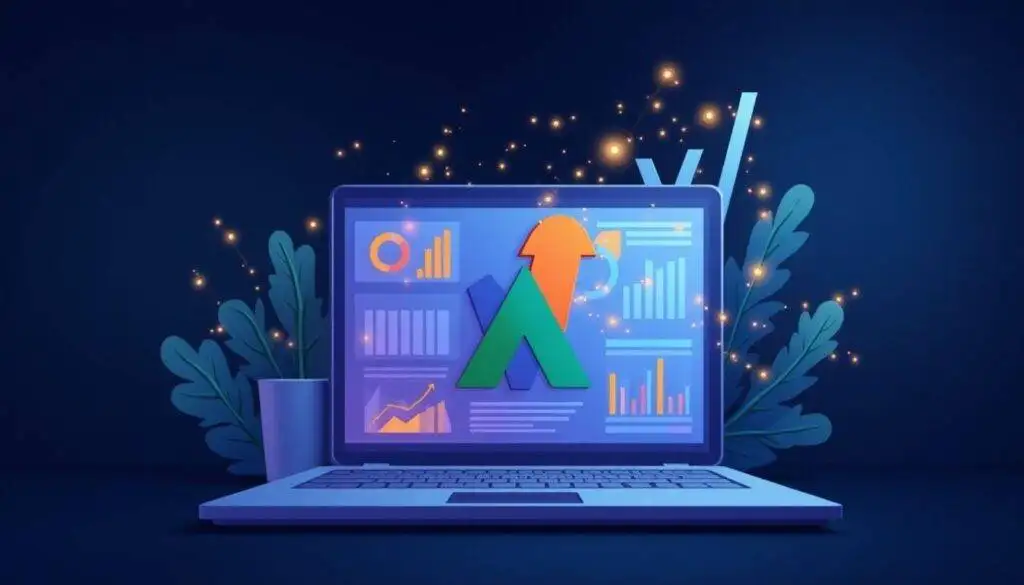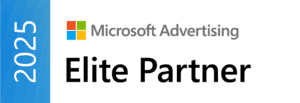Navigating the ever-evolving landscape of Google Ads can be a daunting task, especially with the rise of AI and automation. Many advertisers find themselves grappling with decreased control over their ad budgets and performance metrics. To bridge this gap, third-party Google Ads management services and tools have become indispensable. These tools offer crucial features such as competitor analysis, custom reporting, and automation of repetitive tasks, helping businesses optimize their ad campaigns more effectively. In this blog, we’ll explore the top 10 Google Ads management tools in 2024, each designed to give advertisers the edge they need in a competitive market.
Google Ads Evolution in 2024
 In 2024, Google Ads has seen significant advancements, largely driven by AI. The introduction of AI-driven features has revolutionized ad targeting and personalization, allowing advertisers to reach their audiences more effectively. Machine learning plays a crucial role in providing better keyword suggestions and making smart bid adjustments, ensuring optimal ad performance. Responding to global regulations, Google Ads has enhanced data privacy measures, giving users greater control over their information. For mobile-first audiences, new ad formats have been launched, making ads more engaging and relevant. With improved audience segmentation capabilities using first-party data, advertisers can now create more precise campaigns. Performance Max campaigns offer a holistic approach to ad strategies by integrating various ad formats and channels. Google Shopping ads have also been expanded, providing more customizable options for retailers. The Google Ads dashboard has been updated for a more intuitive user experience, simplifying campaign management. Additionally, new tools for cross-channel campaign management and reporting have been introduced, giving advertisers a comprehensive view of their ad performance. Lastly, there is an increased focus on sustainability, promoting eco-friendly advertising practices to align with global environmental goals.
In 2024, Google Ads has seen significant advancements, largely driven by AI. The introduction of AI-driven features has revolutionized ad targeting and personalization, allowing advertisers to reach their audiences more effectively. Machine learning plays a crucial role in providing better keyword suggestions and making smart bid adjustments, ensuring optimal ad performance. Responding to global regulations, Google Ads has enhanced data privacy measures, giving users greater control over their information. For mobile-first audiences, new ad formats have been launched, making ads more engaging and relevant. With improved audience segmentation capabilities using first-party data, advertisers can now create more precise campaigns. Performance Max campaigns offer a holistic approach to ad strategies by integrating various ad formats and channels. Google Shopping ads have also been expanded, providing more customizable options for retailers. The Google Ads dashboard has been updated for a more intuitive user experience, simplifying campaign management. Additionally, new tools for cross-channel campaign management and reporting have been introduced, giving advertisers a comprehensive view of their ad performance. Lastly, there is an increased focus on sustainability, promoting eco-friendly advertising practices to align with global environmental goals.
Challenges with Automation in Google Ads
 While automation in Google Ads promises efficiency, it brings a set of challenges. Over-relying on automation can reduce control over campaigns, making it difficult to adjust strategies when performance dips. Debugging automated strategies is often complex, as there’s limited transparency in how algorithms make decisions. Misconfigured automated settings can lead to ad spend wastage. Moreover, automated ad generation may stifle creativity, resulting in less engaging copy. Maintaining personalized customer interactions can become challenging as automation lacks the human touch. Continuous monitoring is essential to ensure that automation aligns with business goals. Integrating automation with third-party tools can also be problematic. Effective automation is highly dependent on accurate data inputs. Lastly, automation might overlook niche marketing opportunities that require a more hands-on approach.
While automation in Google Ads promises efficiency, it brings a set of challenges. Over-relying on automation can reduce control over campaigns, making it difficult to adjust strategies when performance dips. Debugging automated strategies is often complex, as there’s limited transparency in how algorithms make decisions. Misconfigured automated settings can lead to ad spend wastage. Moreover, automated ad generation may stifle creativity, resulting in less engaging copy. Maintaining personalized customer interactions can become challenging as automation lacks the human touch. Continuous monitoring is essential to ensure that automation aligns with business goals. Integrating automation with third-party tools can also be problematic. Effective automation is highly dependent on accurate data inputs. Lastly, automation might overlook niche marketing opportunities that require a more hands-on approach.
How Third-Party Tools Help Advertisers
 Third-party tools offer advanced analytics and reporting features that go beyond what native platforms provide. These tools give advertisers the ability to manage budgets more effectively, ensuring optimal ad spend. Enhanced audience segmentation allows for more precise targeting, which can lead to better campaign results. Additionally, these tools facilitate easier A/B testing and performance tracking, enabling advertisers to refine their strategies more efficiently. Automation of repetitive tasks is another significant advantage, helping to maintain control while saving time. Integration with other marketing channels offers a unified approach to advertising, streamlining the overall marketing strategy. Competitive analysis and benchmarking provide valuable insights, allowing advertisers to stay ahead of industry trends. Bulk editing and management features are especially useful for handling large campaigns. These tools are often tailored to meet the specific needs of different business sizes, offering specialized features. Finally, ongoing support and updates ensure that advertisers can adapt to changing market conditions seamlessly.
Third-party tools offer advanced analytics and reporting features that go beyond what native platforms provide. These tools give advertisers the ability to manage budgets more effectively, ensuring optimal ad spend. Enhanced audience segmentation allows for more precise targeting, which can lead to better campaign results. Additionally, these tools facilitate easier A/B testing and performance tracking, enabling advertisers to refine their strategies more efficiently. Automation of repetitive tasks is another significant advantage, helping to maintain control while saving time. Integration with other marketing channels offers a unified approach to advertising, streamlining the overall marketing strategy. Competitive analysis and benchmarking provide valuable insights, allowing advertisers to stay ahead of industry trends. Bulk editing and management features are especially useful for handling large campaigns. These tools are often tailored to meet the specific needs of different business sizes, offering specialized features. Finally, ongoing support and updates ensure that advertisers can adapt to changing market conditions seamlessly.
Why Native Google Ads Features Fall Short
As a verteran Google Advertising agency, we have lots of experience with the pros and cons of Google Ads. While Google Ads offers a robust platform, it often falls short in several key areas. One of the main issues is its limited advanced analytics compared to third-party tools. For businesses with complex needs, the basic budget management features may prove inadequate. The automation features provided are generalized and lack the customization options that many marketers require. Additionally, there are limited options for cross-channel campaign integration, which can be a significant drawback for businesses running multi-platform campaigns. The reporting tools are basic and often provide less actionable insights. Specialized tools for niche markets are also lacking, making it harder for certain industries to optimize their campaigns effectively. The platform offers less flexibility in ad creation and testing, which can hinder performance optimization. Managing large-scale campaigns can be cumbersome due to limited support for bulk editing. Dependence on Google’s ecosystem restricts integration options with other tools. Lastly, updates and new features are rolled out slower compared to third-party tools, which can leave businesses waiting for crucial capabilities.
1. Optmyzr: Advanced PPC Management
Optmyzr provides a suite of tools for advanced PPC management. It offers detailed reporting and analytics to track campaign performance, giving marketers insights into their ad strategies. The platform facilitates A/B testing and optimization of ad copy, allowing users to identify the most effective messages. Automated bid adjustments based on performance ensure your budget is spent wisely. With tools for bulk editing, managing large campaigns becomes efficient and straightforward. Optmyzr’s budget management tools help optimize ad spend, ensuring you get the most out of your budget. It integrates with multiple ad platforms, providing a unified approach to campaign management. Users receive alerts and recommendations for improvements, making it easier to maintain high-performing campaigns. Rule-based automation supports customized campaign management, and the platform offers training and support to help users maximize their use of the tools.
2. Google Ads Editor: Bulk Editing Tool
Google Ads Editor is a powerful tool designed for managing Google Ads campaigns offline, allowing for efficient bulk editing. This tool is particularly useful for large campaigns where making individual changes can be time-consuming. With advanced search and replace functionality, users can quickly update multiple elements across different campaigns. Google Ads Editor also offers options to duplicate and replicate campaigns, making it easier to manage similar ad sets. The import and export features facilitate easy transfer of campaign data, while the error checking function ensures that all campaigns comply with Google’s policies. Additionally, the tool supports multiple account management from a single interface, enabling quick navigation and editing of various campaign elements. Before publishing, users can review all changes to ensure accuracy. The user-friendly interface further enhances the efficiency of campaign management, making Google Ads Editor an essential tool for advertisers.
3. Opteo: Optimization for Small Businesses
Opteo is tailored specifically to meet the needs of small businesses, offering a suite of features designed to enhance ad campaign performance. One of its standout attributes is the automated suggestions for campaign improvements, which help businesses optimize their ads without needing extensive expertise. Real-time monitoring tools allow users to keep a close eye on ad performance, ensuring that campaigns are always running effectively. Additionally, Opteo provides budget tracking functionalities to prevent overspending, a crucial feature for small businesses with limited marketing budgets. The platform also supports A/B testing for both ad copy and landing pages, allowing users to determine which variants perform best. Keyword optimization features help to refine targeting, ensuring that ads reach the most relevant audience. Integration with Google Ads makes management seamless, and detailed performance reports offer valuable insights. Alerts for performance issues and recommendations ensure that users can quickly address any problems. The user-friendly interface makes navigation and use straightforward, even for those who may not be tech-savvy.
4. TrueClicks: Cloud-Based Auditing
TrueClicks offers a comprehensive auditing solution for Google Ads accounts, ensuring that advertisers can identify areas of improvement and potential issues quickly. This cloud-based tool provides automated reporting with actionable insights, making it easier to optimize campaigns effectively. TrueClicks supports integration with multiple ad platforms, allowing users to streamline their ad management processes. The tool includes features for monitoring compliance with ad policies, which is crucial for maintaining a good standing with Google. With ongoing performance tracking and optimization, users can continuously improve their ad campaigns. TrueClicks also offers recommendations for bid adjustments and budget allocation, helping users to make data-driven decisions. The user-friendly interface ensures easy access to audit results, and the tool supports collaboration with team members through shared reports. Additionally, TrueClicks provides training and support to help users maximize the benefits of the tool.
5. Acquisio: AI-Powered PPC Scaling
Acquisio leverages artificial intelligence to automate bid adjustments and optimizations, making it a powerful tool for scaling PPC campaigns across various platforms. Its detailed reporting and performance analytics provide valuable insights for making data-driven decisions. The platform also includes tools for effective budget management and allocation, ensuring that your advertising spend is optimized. Acquisio facilitates A/B testing, enabling continuous improvement of your campaigns by identifying what works best. With features for audience segmentation and targeting, it helps in reaching the right audience effectively. The tool supports integration with multiple advertising channels and offers automated recommendations for campaign enhancements. Its user-friendly interface makes campaign management efficient, and ongoing support ensures that the platform adapts to market changes seamlessly.
6. Marin: Campaign Management with Budgeting
Marin offers a robust set of tools for comprehensive campaign management, making it a top choice for digital marketers in 2024. One of its standout features is detailed budget tracking and allocation, which allows users to manage their ad spend effectively across various campaigns. The platform supports integration with multiple advertising channels, enabling seamless cross-channel campaign management and reporting. Advanced analytics and performance insights provide users with a clear understanding of their campaign metrics, while automated bid adjustments and optimizations help in maximizing ROI. Marin also includes features for audience segmentation and targeting, ensuring that ads reach the right people. The tool provides alerts and recommendations for campaign improvements, helping users stay on top of their game. With a user-friendly interface, navigating through the platform is straightforward, and comprehensive training and support are available to help users fully leverage the tool’s capabilities.
7. Skai: Enterprise Marketing Solution
Skai offers a unified platform for managing all your marketing activities across search, social, and e-commerce channels. Leveraging advanced AI and machine learning, Skai optimizes ad performance by analyzing vast amounts of data. Its cross-channel analytics provide a comprehensive view of your campaign‘s effectiveness. Skai integrates seamlessly with various third-party tools and data sources, ensuring a smooth workflow. The platform also features robust budget management and forecasting tools to help you maximize ROI. Granular audience targeting and segmentation enable personalized ad experiences, while sophisticated fraud detection mechanisms ensure the integrity of your campaigns. Dynamic creative optimization allows for real-time tailoring of ad content. Skai’s detailed reporting and visualization options make it easy to track key metrics. Additionally, the platform offers dedicated customer support and comprehensive training resources to help you get the most out of your campaigns.
8. Adalysis: PPC Health Checks
Adalysis offers automated PPC audits that help identify potential issues and optimization opportunities in your campaigns. This tool provides actionable insights and recommendations to improve your campaign performance. It features comprehensive keyword analysis and management tools, enabling you to refine your targeting strategies effectively. Additionally, Adalysis includes competitive analysis, allowing you to benchmark your campaigns against industry standards. The platform supports ad copy testing and optimization to enhance your click-through rates. Budget and spend tracking is another key feature, ensuring you allocate resources efficiently. Adalysis seamlessly integrates with Google Ads and Microsoft Advertising, making management more straightforward. Customizable alerts and notifications help you stay on top of your campaign health, and robust reporting features allow you to track performance over time. The user-friendly interface ensures that even those new to PPC management can navigate the tool with ease.
9. PPC Samurai: Reporting and Auditing
PPC Samurai stands out for its ability to automate the creation of detailed PPC reports using customizable templates. This feature is particularly beneficial for agencies and large businesses managing multiple accounts. The tool integrates seamlessly with major PPC platforms like Google Ads and Bing Ads, making it a versatile choice for comprehensive campaign management. Advanced auditing tools help identify and fix performance issues, while keyword and ad group performance analysis provide deeper insights into campaign effectiveness. Agencies can take advantage of white-label reporting to brand their client reports, enhancing their professional image. Additionally, budget tracking and forecasting tools help optimize spend allocation, ensuring efficient use of resources. The platform’s detailed competitor analysis keeps businesses ahead in the market by providing actionable insights. Customizable dashboards offer real-time performance monitoring, and robust customer support along with a library of training resources ensure users can fully leverage the tool’s capabilities.
10. Adzooma: PPC Analysis with Free Plan
Adzooma offers a free plan that includes basic PPC analysis tools, making it ideal for small businesses looking to manage their online advertising efficiently. The platform provides automated recommendations to enhance ad performance, ensuring you get the most out of your ad spend. Integrating seamlessly with Google Ads, Microsoft Advertising, and Facebook Ads, Adzooma supports a wide range of advertising needs. Its user-friendly interface allows for easy setup and smooth navigation, even for beginners. With features like keyword and ad performance analysis, you can optimize your campaigns effectively. Budget management tools help you track and control your ad spend, while competitor analysis allows you to benchmark your campaign performance against others in your industry. Adzooma also includes reporting features to monitor key metrics and KPIs, and customizable alerts keep you informed about any changes in your campaigns. Additionally, you have access to customer support and a comprehensive knowledge base for any troubleshooting needs.
Choosing the Right Tool for Your Needs
Choosing the right Google Ads management tool requires a clear understanding of your business size and budget. For smaller businesses, cost-effective tools may be more suitable, while larger enterprises might benefit from premium features despite higher costs. Identify the specific features you need, such as detailed reporting, auditing capabilities, or advanced optimization options. Ensure the tool integrates seamlessly with the advertising platforms you already use, like Google Ads or social media channels. A user-friendly interface and ease of use are crucial, as they can significantly impact your team’s efficiency. Additionally, consider the availability of customer support and training resources to help you get the most out of the tool. Automation can save valuable time, so evaluate how much of the process can be automated. Reading case studies or testimonials can provide insights into user satisfaction and effectiveness. Also, check if the tool is scalable to grow with your business needs. Compare different pricing plans and be aware of any extra costs for premium features. Finally, make use of free trials or demos to test the tool’s capabilities and ensure it fits your requirements before making a commitment.
- Assess your business size and budget to determine the appropriate tool.
- Consider the specific features you need, such as reporting, auditing, or optimization.
- Look for tools that integrate with the advertising platforms you use.
- Evaluate the user interface and ease of use to ensure it meets your team’s needs.
- Check for customer support options and available training resources.
- Consider the level of automation provided and how it can save time.
- Review case studies or testimonials to gauge user satisfaction.
- Analyze the scalability of the tool to grow with your business.
- Compare pricing plans and any additional costs for premium features.
- Test free trials or demos to get hands-on experience before committing.
Frequently Asked Questions
1. What features should I look for in a Google Ads management tool?
Look for features like campaign automation, keyword tracking, bid management, ad testing, detailed reporting, and integration with other marketing tools.
2. How can a Google Ads management tool improve my ad performance?
These tools can help optimize your keywords, bids, and ad placements automatically. They also provide insights through detailed reports to refine your strategies, improving your overall ad performance.
3. Are there Google Ads management tools that support multiple accounts?
Yes, many Google Ads management tools support multiple accounts, making it easier to manage campaigns for different clients or projects from a single dashboard.
4. Do these tools offer integration with analytics platforms?
Most advanced Google Ads management tools offer integration with analytics platforms like Google Analytics. This helps in tracking and analyzing ad performance more effectively.
5. Can I use these tools to manage ad budgets better?
Absolutely, these tools often come with budget management features. They can help you allocate funds more efficiently, monitor spend, and ensure you don’t exceed your budget.
TL;DR string: The blog “Top 10 Google Ads Management Tools in 2024” explores the rapid evolution of Google Ads with new AI-driven features and machine learning integrations. It highlights challenges in automation, such as reduced control and creativity, and the benefits of third-party tools over native Google Ads features. The blog reviews the top tools like Optmyzr for advanced PPC management, Google Ads Editor for bulk editing, Opteo for small business optimization, and others, offering features like detailed analytics, budget management, cross-channel integration, and user-friendly interfaces. Finally, it provides guidance on choosing the right tool based on business size, required features, ease of use, and support options.



